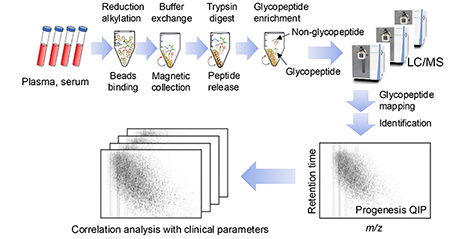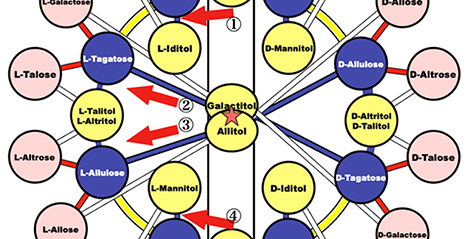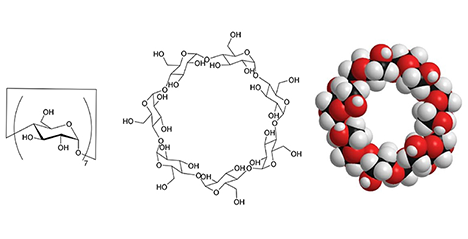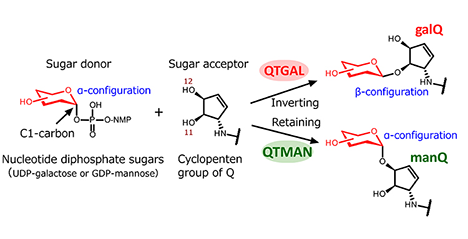The Human Glycome Atlas Project (HGA), which launched in April 2023, aims to perform glycoproteomics on a large cohort of samples, using a detailed human glycan map as a reference, to create a catalog of human glycans related to disease. During the first 5 years of the project, the focus will be on dementia and aging, and 20,000 samples mainly from plasma and serum will be analyzed. In the following 5 years, the scope will be broadened to include various diseases, and 200,000 samples will be targeted for analysis. Our goal is to establish and fully automate a global standard method for analyzing glycoproteomics profiles, enabling the large-scale analysis of glycan structures and the collection of comprehensive glycan data. ...and more

This article series focuses mainly on monosaccharides with six carbon atoms, namely hexoses. Many rare sugars with interesting bioactivity have six carbon atoms. The reason for this is difficult to explain, but it may be related to the fact that organisms mainly metabolize D-glucose and other hexoses.In this second article of the series, we describe the development history of the strategy map for the systematic production of all hexoses (Izumoring), the significance of the production strategy map, problems that have become apparent in Izumoring-based rare sugar production, and a new strategy map for rare sugar production (Izumoring Ⅱ) developed to solve these problems. We also introduce a simplified version of the Fischer projection formula for monosaccharides (Izumofleet formula), which is used in the new strategy map for rare sugar production. ...and more

However, considering the potential of chitin as biomass, its utilization is currently insufficient. This is because chitin has a lower solubility in common organic solvents compared to cellulose, a woody biomass, which reduces its processability and usability. As part of our research on chitin biorefinery, our group is focusing on chitin decomposition products, which are more soluble in water than chitin and have significantly improved processing properties. Chitin decomposition products are mixtures of GlcNAc and chitin oligosaccharides (degree of polymerization 2 to 6) that are industrially produced from chitin. In this article, we introduce the part of our research focused on the utilization of chitin decomposition products as biomass resources: our studies on the reconstruction of in vivo glycans and the creation of biofunctional molecules. ...and more

Cyclodextrins (CDs) are cyclic oligosaccharide molecules with a size of 1 nm, consisting of glucose units (Fig. 1). This molecule has the property of inclusion, i.e., it allows a variety of molecules to enter the cavity of its ring structure. It not only is the subject of academic study but also is employed extensively in practice in a number of industries, including food, cosmetics and pharmaceuticals. Another salient feature is that these molecules have a number of hydroxy groups. In general, it is possible to convert hydroxy groups into various functional groups through chemical modification. This allows the synthesis of CDs with novel structures and capabilities. Here, we describe the work to create antibacterial CD derivatives by introduction of cationic and hydrophobic groups to disrupt bacterial cell membranes. ...and more

The rapid growth of R&D in glycosciences demands the development of rapid, efficient, and simple procedures for glycan synthesis. High Performance Liquid Chromatography equipment-based Automation (HPLC-A) of carbohydrate synthesis seeks to meet this demand by focusing on the development of an affordable and accessible automation platform that will enable both specialists and non-specialists to perform the synthesis of glycans from renewable precursors. Current methods for the synthesis of glycans are highly sophisticated and operationally complex. By contrast, HPLC-A represents a highly accessible method for synthesis because many scientists already have easy access to HPLC equipment. Automated synthesis offers operational simplicity by delivering all reagents using standard HPLC components, but also convenient real-time reaction monitoring of every step. ...and more

Transfer RNA (tRNA), an adaptor molecule in protein synthesis, contains various types of chemical modifications that play crucial roles in its function. Queuosine (Q), characterized by a 7-deazaguanosine bearing a bulky side chain with a cyclopentene group, is a tRNA modification widely present in both bacteria and eukaryotes. In the tRNAs of humans and vertebrates, Q can be further galactosylated to form galactosyl-queuosine (galQ), or mannosylated to form mannosyl-queuosine (manQ). The function of these glycosylated Q modifications had remained unclear for nearly half a century since their discovery. We recently identified two glycosyltransferases responsible for the formation of galQ and manQ, and have elucidated the biosynthesis, functions in protein synthesis, and physiological significance of these glycosylated Q tRNA modifications. ...and more
